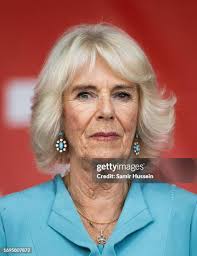
Introduction
Queen Camilla, the consort of King Charles III, has become a significant figure in the British royal family since her marriage to Charles in 2005. With her public role evolving particularly in the wake of her husband’s ascension to the throne, her contributions to various social causes and royal duties have sparked renewed interest and discussion about her influence and impact in contemporary society.
Background and Rise to Prominence
Born Camilla Rosemary Shand in 1947, Queen Camilla spent her early years in East Sussex. She became familiar with royal circles after she met Prince Charles in the early 1970s. The couple’s relationship has a long and tumultuous history, marked by societal scrutiny and media attention. Despite initial controversies, particularly surrounding the circumstances of Charles’s first marriage, Camilla has gradually won over a significant portion of the public. Her dedication to charitable works, particularly in health and literacy, has helped reshape her public image from that of a controversial figure to a committed royal consort.
Current Role and Responsibilities
As Queen Consort, Camilla has assumed a variety of responsibilities, including supporting King Charles III in his royal engagements and championing important social issues. Her current initiatives include advocating for mental health awareness, promoting the importance of literacy, and highlighting domestic violence and abuse. Through her work with organisations such as the National Literacy Trust, she emphasises the educational and empowering role of reading and writing.
Public Reception and Future Influence
Queen Camilla’s reputation has notably improved over the years, with recent polls indicating a more favourable view amongst the British public. Her recent appearances alongside King Charles III show her commitment to engaging with people and addressing pertinent societal issues. As the couple continues to navigate the complexities of monarchy in the 21st century, many are curious about the role she will play in shaping the future of the royal family.
Conclusion
In conclusion, Queen Camilla’s journey reflects a broader narrative of transformation and resilience within the British monarchy. With her growing influence and commitment to charitable causes, she is becoming an integral part of the royal family’s future. As interest in her activities and public roles continues to rise, it is clear that Queen Camilla’s legacy will extend well beyond her title, solidifying her position as a modern and relatable member of the British monarchy.
You may also like

The Rise and Influence of Kylie Jenner

The Life and Legacy of Freddie Scappaticci
